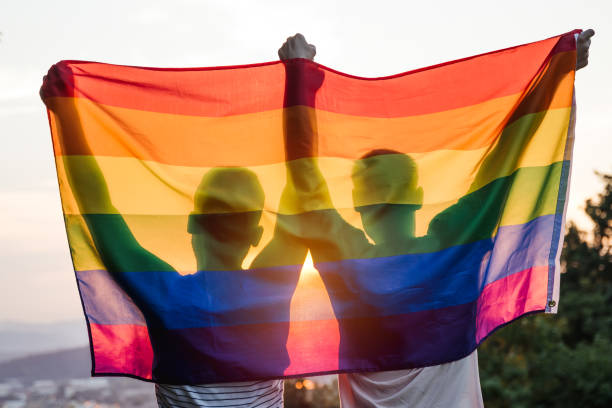International Day Against Homophobia, Transphobia & Biphobia: People from the LGBTQIAPD+ Community often experience bullying, harassment, or discrimination from other people or within themselves. The Indian education system has no curriculum for it & neither person talk about it openly as it’s still a taboo even after the Supreme Court of India put an end to the Victorian Law of Sec 377.
Let’s Know About Homophobia.
Homophobia is the dread, hate, discomfort, or distrust of queer-identifying individuals (P.S. Queer is an umbrella term for the LGBTQIA+ Community). Biphobia is the dread, hate, discomfort, or distrust of bisexual individuals. Likewise, transphobia is the dread, hostility, discomfort, or distrust of those who are transgender, genderqueer, or who do not adhere to standard gender norms.
Despite their similarities, transphobia, biphobia, and homophobia are not the same thing. Both homosexuals and heterosexuals can be transphobic and biphobic, and it is possible to be transphobic without being homophobic or biphobic.
Homophobia can take many various forms, including unfavorable attitudes and views regarding bisexual, transgender, and homosexual persons, aversion, and prejudice. Frequently, it comes from unjustified fear and misunderstanding. Some individuals’ homophobia may come from their strict religious views. It is possible for someone to hold homophobic attitudes if they were taught them by their parents and families.
Homophobic individuals may use insulting words and derogatory terms while talking to or addressing lesbian and homosexual individuals. Biphobic individuals may tell bisexuals that their orientation is “simply for attention” or that they are intrinsically unfaithful. In their most extreme manifestations, homophobia and biphobia can lead to harassment, abuse, and acts of violence against lesbian, gay, and bisexual individuals.
Depending on their sexual orientation or gender identity, some LGBTQIAPD+ individuals face prejudice. This may be discrimination by religious organizations, businesses, or the government. Not allowing same-sex couples to marry, being legally fired for being queer, or being denied access to specific housing are examples of discrimination.
LGBTQIAPD+ individuals and their allies have battled for and continue to fight for equal rights, particularly with regard to marriage, employment, housing, and healthcare equality, as well as protection from hate crimes (violence against LGBTQIAPD+ people because of who they are).
Internalized homophobia refers to those who are homophobic and also experience same-sex desire. People who have unfavorable attitudes and views about persons who experience same-sex attraction may sometimes internalize these ideas rather than confront their own impulses. This may indicate that they are uncomfortable and disapprove of their own same-sex attraction, will never embrace their same-sex desire, or will never identify as lesbian, gay, or bisexual.
People with internalized homophobia may feel the need to “prove” that they are straight, display extremely conventional behaviours of straight men and women, or even harass and discriminate against openly homosexual individuals.
What’s Coming Out?
Coming out is the act of revealing one sexual orientation to friends & family. If you reveal information about a person’s sexual orientation against their desires, you run the danger of negatively impacting their lives by making them feel humiliated, distressed, and vulnerable. Never share someone’s sexual orientation or gender identity without their content.
You may also expose children to the possibility of prejudice and violence. Remember that if someone discloses their orientation with you, it is an honor that they trusted you enough to do so. Always ask about what you may share with others and adhere to their requests.
What Steps Can You Take to Ensure Zero Discrimination?
No one has the right to discriminate against, bully, or emotionally or physically harm another person. Several actions may be taken to combat homophobia, biphobia, and transphobia around you:
- Never use derogatory or insulting terms to characterize LGBTQIAPD+ individuals.
- Even casual words, such as expressing “that’s so gay” can be disrespectful to others.
- Do not believe any stereotypes or make assumptions about queer folks.
- Regardless of your personal sexual orientation and identity, demonstrate strong support for the LGBTQIAPD+ community. This is referred to as ALLY.
- Inform the LGBTQIAPD+ individuals in your life that you are a friend and ally.
- Inform yourself about LGBTQIAPD+ concerns.
- Respect the decisions of LGBTQIAPD+ individuals on when and where to come out.
- Remember that a person’s LGBTQIAPD+ status is only one aspect of their complicated identity and existence.
- Exhibit the same level of interest in the partners of your LGBTQIAPD+ friends and family members as you would a straight person’s spouse.
Speak up if you feel safe doing so when you notice others participating in homophobic or biphobic conduct, such as making insensitive jokes, using insulting language, or bullying or harassing someone based on their sexual orientation or identity.
Speak Up, Right Now!
Not everyone resides in an area with a Queer Alliance or LGBTQIAPD+ community center at their high school/college. In this context, the Internet is extraordinarily valuable for locating groups and resources to combat homophobia and prejudice.
Even though it feels frightening, if you are a young person who is facing harassment at school/college, you must notify someone. If you do not seek assistance and tolerate the harassment, it will likely persist and may worsen over time. This might make it difficult to maintain grades, activities, and basic schoolwork.
Some schools/colleges may have an anti-harassment and anti-bullying policy, and some states have enacted a Safe Schools Law, which means that your school authorities are compelled by law to cease the harassment. Find a trustworthy teacher or adult who is an ally to LGBTQIAPD+ kids and ask for their assistance, if feasible.













